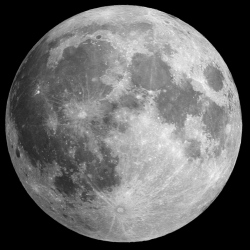
Bezos says his Blue Origin space venture will work with NASA as well as the ESA to create a settlement on the moon. Even if Blue Origin can’t strike public-private partnerships, Bezos will do what needs to be done to make it so, he said at the International Space Development Conference.
Bezos laid out his vision for lunar settlement during a fireside chat with Alan Boyle, which took place just after he received the National Space Society’s Gerard K. O’Neill Memorial Award.
In the short run, Blue Origin’s objective is to reduce the cost of access to space — initially with its New Shepard suborbital spaceship, and then with its orbital-class New Glenn rocket in the 2020s.
In the long run, Bezos’ vision is to smooth the way for millions of people working in space. Those people just might live and work in hollowed-out asteroids — a concept that was proposed decades ago by O’Neill, a Princeton physicist whose ideas on space settlement fueled Bezos’ passion for the final frontier.
Blue Origin has a lunar lander on the drawing boards that’s designed to be capable of delivery 5 tons of payload to the lunar surface. That’s hefty enough to be used for transporting people — and with enough support, it could start flying by the mid-2020s.
Blue Origin has proposed building its Blue Moon lander under the terms of a public-private partnership with NASA. “By the way, we will do that, even if NASA doesn’t do it,” Bezos said. “We’ll do it eventually. We could do it a lot faster through a partnership.”
The space agency is just starting to consider its options for a heavy-duty lunar lander — and Blue Origin is sure to face competition from other companies, including SpaceX as well as United Launch Alliance and Masten Space Systems.
Bricks have been 3D printed out of simulated moondust using concentrated sunlight. This ESA project took place at the DLR German Aerospace Center facility in Cologne, with a 3D printer table attached to a solar furnace, baking successive 0.1 mm layers of moondust at a temperature of 1000°C.
A 20 x 10 x 3 cm brick for building can be completed in around five hours. DLR Cologne’s solar furnace has two working setups: as a baseline, it uses 147 curved mirror facets to focus either actual sunlight into a high temperature beam, employed to melt together the grains of regolith. But this mode is weather dependent, so a solar simulator was subsequently employed as well – based on an array of xenon lamps more typically found in cinema projectors.
